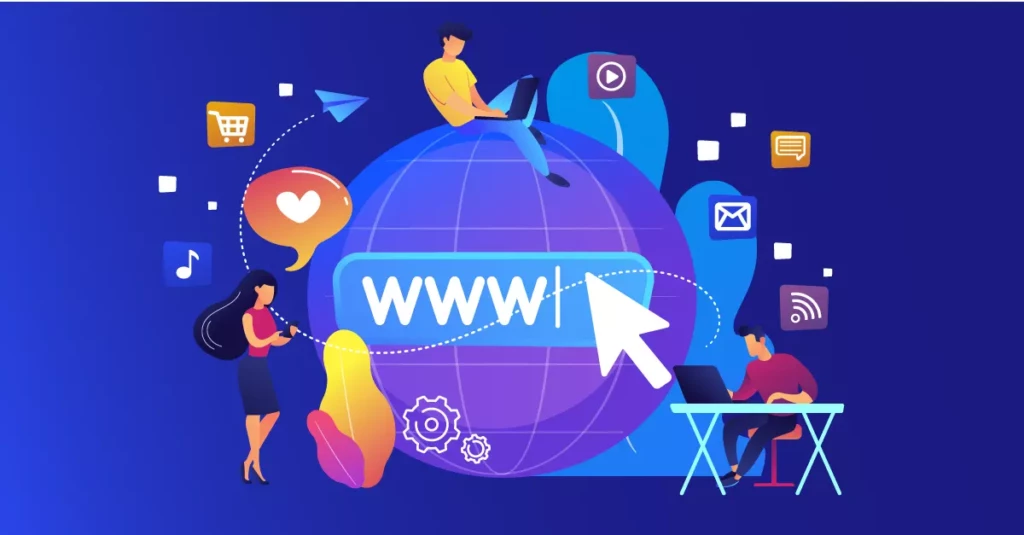The “internet of behaviors” (also just “internet of behavior”) is a somewhat recent phrase that refers to the combination of physical and digital worlds through devices such as sensors and smartphones. The idea is that everyday objects will be connected to “the cloud,” allowing them to send and receive data to provide value either in a closed or open ecosystem. As an example, imagine a smartphone sensing trash in a public garbage can and sending a message notifying someone in the community about it. This information could also be made available via a web page for anyone who wants to access it from anywhere in the world. It has been said that when this becomes a reality, “the internet will be in things.”
How is IoB different than IoT?
A related and probably more well-known phrase is the “Internet of Things (IoT)”, which refers more to the actual network of physical objects that contain embedded technology to communicate and sense or interact with their internal states or the external environment.
IoT has three main components: sensing, connectivity, and actuation. Sensing enables devices to have an awareness of their surroundings. Connectivity refers to communication between devices using various technologies such as Wi-Fi, Bluetooth, NFC, RFID, cellular networks, etc. Actuation involves using sensory input from devices in real-time to control or manage change in the world around us or within our smart spaces.
A more specific term related to the IoT is machine-to-machine communication, also known as M2M communication which focuses on the interaction of devices with each other, rather than between a human and a device. In many cases, IoT also refers to two or more machines interacting with one another for a specific function. This could be anything from making coffee to logging data from sensors on machinery in an industrial facility.
IoB and IoT will provide the ability for anyone to monitor just about anything at any time—and gain immediate access to that information via web browsers or mobile applications anywhere in the world. The term “Internet of Things” was published by Kevin Ashton in 1999. However, Ashton said that its origins can be traced back to 1981, when it was already well-established in Japan.
How will IoB change the world as we know it?
Regardless of awkward naming convention, the Internet of Behaviors and the Internet of Things will fundamentally change the way we live, work and interact with each other. The challenge will be in how to make it “seamless”. We may not even be aware that our surroundings are connected at all until an issue or potential problem is brought to our attention by some form of technology. Imagine your refrigerator reminding you that you’re out of milk when you get home one day. It’s also feasible that sensors placed in certain areas could notify authorities if there was bad weather headed for a specific location. In theory, there’s no limit to where and how IoB and IoT will make a difference.
As the technology becomes more integrated into society, it could have implications far beyond consumer products. The expansion of sensor technologies in smart cities could not only provide better communication for government officials but also potentially improve public safety by making critical information available to first responders more quickly.
In addition, it may be possible that these technologies are integrated into everything from vehicles to parking meters and will help reduce traffic jams or even provide maintenance crews with information concerning when a street light has burned out, allowing them to fix them before they malfunction completely. There are already examples of cities’ experimenting with smart parking meters and demand-based pricing for parking, as a concrete example of the internet of behaviors in action today.
According to Cisco Systems when talking about IoT, “Everything that can benefit a connection will be connected.” As of 2020 there are at least 50 billion connected devices globally.
In the future, each household could have its own system as well as other smart devices such as cars, lights, and appliances all talking to one another automatically without much input from humans at all.
Industry experts anticipate that these systems will be self-configuring and self-healing across a combination of different protocols over wired and wireless networks.
According to IBM’s website, “The Internet of Things will consist primarily of machine-to-machine communications between and among devices and appliances. It won’t just be about people accessing information, buying things, and downloading data; it also will be about machines sending signals to one another so that the ‘Internet of Things’ becomes more than just a concept.”
Machine-to-machine communication is not new as such systems have been used for decades in areas such as cellular technology using different standards such as GSM (Global System for Mobile Communications). Unfortunately, issues can easily arise if these various systems fail to communicate properly with each other because each works within its own parameters which may or may not mesh well with those from another system. For example, if a car can send information about its current state of health to another part of the system, then this could allow for better maintenance leading to fewer breakdowns.
However, information exchange is and will continue to be a barrier to a fully realized internet of behaviors – one reason why data engineering is so huge right now!
Also, some companies may choose proprietary solutions which lock them into using certain products or services, potentially making switching to alternatives more difficult, but also proprietary solutions may decide that data-sharing is a risk to their solution, even in this age of monetizing data and the emergent IoB/IoT paradigm shift.
A potential solution for these problems might involve blockchain technology because it enables devices to communicate directly with each other without requiring a central point where all messages are sent to be checked before being relayed on. Machines can instead trust one another’s messages by signing them cryptographically and passing them on immediately. For example, a washing machine could send a message about itself directly to a supplier who updates their records accordingly.
Expectations for the short and long term
In the short-term, we can expect greater adoption of smart devices focused on convenience and notifications with a heavy direct consumer focus. For example, if your lights detect that you’ve woken up then they could automatically turn on and switch the heating controls to make your house comfortable by the time you get out of bed.
Longer term, these systems will start talking with each other helping us to make better decisions about what we buy or even warning us when something is going wrong before it becomes a major issue. Although controversial with regard to privacy, many cities are piloting programs that allow smart thermostats to be controlled by the city electricity supplier if there is a risk of demand exceeding supply -the city can automatically turn your thermostat down to reduce the risk to the overall grid.
Clearly there are challenges and a need to create both technology and public policy standards which govern how devices can be used for machine-to-machine communication. Further down the line, the ability to communicate using blockchain technology could be vital for making everything work together.
Summary of the Advantages of Internet of Behaviors technology:
- Self-optimization: Devices can automatically optimize themselves by sharing information with each other which allows for better planning and decision making along the supply chain.
- Quality improvements: Gathering information from a network of devices can lead to improving overall product quality as issues are discovered early on before they cause major problems further down the line where it might be too late to solve them easily. For example, if one part receives more stress than anticipated then replacing it could help avoid larger systemic issues occurring either immediately or in the future.
- Better security: Systems that work together automatically can identify potential threats and take steps to stop them before they turn into something serious such as sensitive data being stolen or certain devices being targeted for hacking attempts because their defenses are too weak.
- Better customer experience: By sending the right information to the right people at the right time, everything can be handled more efficiently leading to better experiences for everyone involved including consumers who are given the products they want in a shorter amount of time while having to wait less overall thanks to artificial intelligence being used to optimize scheduling and other aspects of operations.
Conclusion:
The Internet of Behavior is a continuation of the IoT that focuses on analyzing behavior instead of just tracking data. This allows devices to optimize themselves by making better decisions, which enables saving money, time and other resources while at the same time improving customer experience. In the short-term this will lead to more automation but in the long-term it should be possible for a lot of other benefits as well including security and quality improvements.








